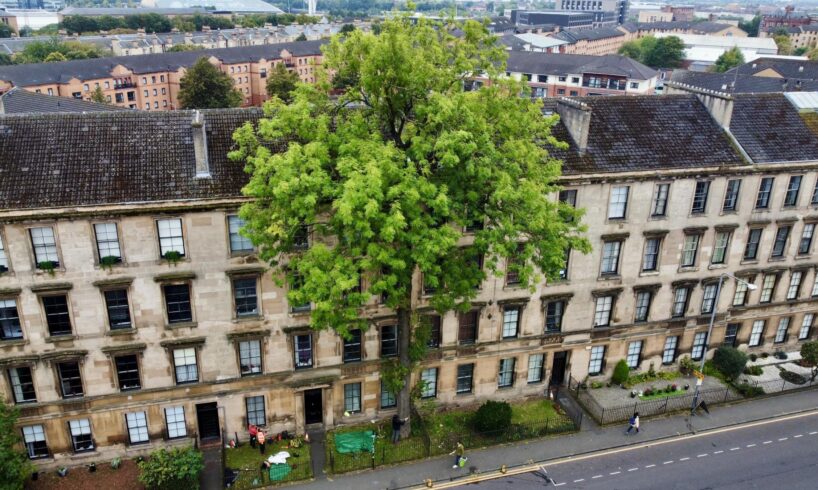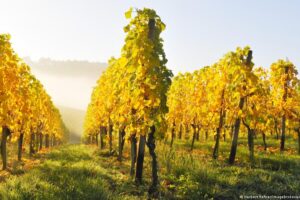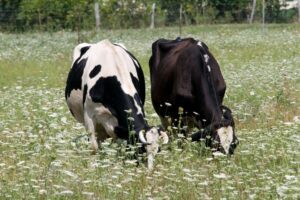
The Ash, a Glasgow landmark, was planted during the Victorian era and has survived the Clydeside Blitz, recent redevelopment and – thus far – ash dieback.
It has been nominated alongside a sycamore growing in the grounds of Napier University which is thought to have inspired the WWI poet Wilfred Owen as he convalesced there after suffering shellshock in the trenches of France.
Eight other trees from across the UK make up the list – including a cedar that The Beatles climbed, an oak named in a poem within a Virginia Woolf book, and a solitary beech which appeared in the final scenes of the film ‘1917’.
Tree of the Year, supported by players of People’s Postcode Lottery, features 10 trees of differing ages and species from across the UK, with nine selected by a panel of experts, plus a wildcard from the public.
Douglas Crawford Tree Wise Urban Forestry (Image: Douglas Crawford Tree Wise Urban Forestry) The final winner is selected after a public vote. Last year the Skippinish Oak, in Lochaber, took the crown.
Woodland Trust Patron, actress and author, Dame Judi Dench said: “Our oldest trees hold more stories than Shakespeare; some were putting down roots long before he began writing, more than 400 years ago.
“They are as much part of our heritage as any literature, and I’m delighted to announce the shortlist of the 2025 Tree of the Year competition, featuring trees that foster creativity and inspire. I hope you will join me in voting.”
The Argyle Street Ash made the shortlist as a ‘wildcard pick’ after being nominated by David Treanor from Glasgow.
Also known as ‘The Lone Tree of Finnieston’, the tree was described in James Cowan’s 1935 book From Glasgow’s Treasure Chest as “quite the most graceful ash I have seen.”
It was the first tree in Glasgow to receive a Tree Preservation Order and is regarded as a symbol of resilience locally, producing greenery and shade in an otherwise grey and urban part of the city.
Wilfred Owen’s Sycamore (Image: Woodland Trust/George Anderson) The Wilfred Owen sycamore was planted in the grounds of the former Craiglockhart War Hospital, and was part of the surroundings in 1917 when the Owen was there.
He met and was inspired by fellow poet Siegfried Sassoon at the hospital, and wrote his most famous poems there, before returning to France in 1918 where he was killed in action.
This year’s nominees were chosen along the theme ‘Rooted in Culture’, highlighting how trees are ingrained in our cultural landscape.
READ MORE:
They have long been a source of inspiration and quiet companions for creative minds, and Tree of the Year 2025 is a celebration of this connection, the Woodland Trust said.
Among others on the list is The Beatles’ cedar tree, Chiswick. One of several looming cedars of Lebanon in the grounds of Chiswick House that date from the 1720s, this tree has been nominated for its cultural credentials as a key feature in a Beatles music video.
The Beatles cedar tree (Image: Woodland Trust) The Fab Four perched on one of its low-swooping boughs in 1966 as they played Rain, the B-side to Paperback Writer. The image was also used as the cover for their Nowhere Man EP.
Also nominated are the 2,000-year-old Barrowdale Yews – a “huddle of ancients” described by William Wordsworth in his 1803 poem ‘Yew Trees’ – and the Tree of Peace and Unity in Co. Antrim.
This conjoined tree became a symbol of peace and reconciliation when Tony Blair, David Trimble and John Hume met here in 1998 at the signing of the Good Friday Agreement.
Another making the shortlist is the ‘Lollipop Tree’ of Salisbury Plain. This beech tree stands alone on a grassy plain and has been popular with photographers for years.
It also played a starring role in the poignant final scenes of Sam Mendes’ World War I film, 1917, which features and references to trees throughout.
The Lollipop Tree (Image: Lee Cooper) Laura Chow, Head of Charities at People’s Postcode Lottery said: “We’re delighted our players are supporting this year’s Tree of the Year competition, and what an inspiring shortlist.
“These trees have witnessed key moments in history, provided solace to war poets, been a supporting artist in a blockbuster film, and inspire reflection and creative photography as the seasons change.
“We’re looking forward to seeing which one the public votes as the winning tree”.
Voting opens on Friday and a winner will be announced in September, before representing the UK in the European Tree of the Year finals.





